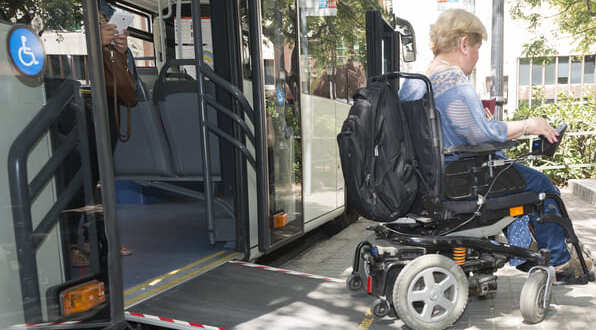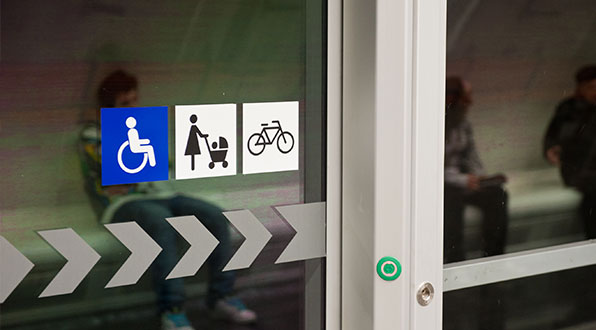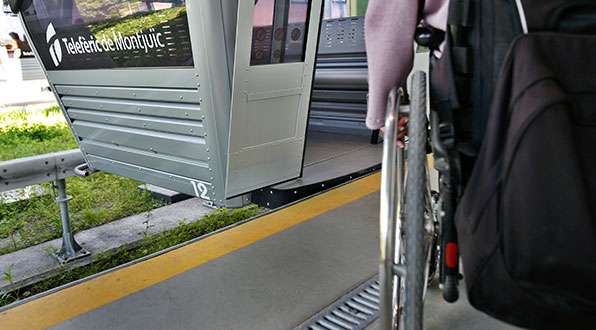Accessibility and reduced mobility
We are driving towards universal access to the metro network
Since 1992, the construction or renovation of metro stations has been used as an opportunity to improve accessibility conditions through the progressive adaptation of all facilities and infrastructure. Some of these measures include: the implementation across the network of ticket machines with voice navigation systems, guidance paths for people with visual impairments in many stations, and elevators, which are now available in 156 of the 165 total stations. Trains have red-marked access doors and feature both visual and acoustic door-closing alerts, as well as next-stop announcements.
Remember, you can check the operational status of elevators in the metro network on the web page for each station.
The entire Barcelona metro network is accessible except for some specific stations (9 out of a total of 165 stations).
Stations due to be adapted:
L1: Plaça de Sants, Espanya and Urquinaona
L4: Verdaguer and Urquinaona
L5: Virrei Amat, Maragall, Verdaguer and Plaça de Sants
Brownse through the information on every line and its stations on metro lines.
Connections between non-adapted lines/operators:
Passeig de Gràcia L2/L4 - L3/Rodalies (commuter trains)/Renfe (mainline trains). (The connection between L2 and L4 to L3 and Rodalies/Renfe is not accessible in either direction).
Clot L1 - L2 (the connection between L1 and L2 is not accessible in either direction).
For more information, visit the Accessible public transport network.
100% accessible bus network
The entire bus network has been fully adapted for people with reduced mobility (PRM) since 2007. Buses of the fleet have reserved seats inside and an access ramp to the vehicle.
With the new buses incorporated in 2020, people with reduced mobility have improved accessibility, such as wide doors and a ramp that adjusts to doors opening. The most important improvement is two opposite spaces, reserved for wheelchairs, authorised scooters and strollers. The safety of seated users is also guaranteed, with a folding side retainer bar and adjustable straps.
We worked to improve cognitive accessibility to people with visual disabilities, too.
For more information, visit the Accessible public transport network.
Scooter access for the metro and bus networks
Access for accredited scooters to travel on the metro and bus networks is regulated according to the provisions of the Bus Service Regulations and the Metro Service Regulations, as well as the conditions set out in the Accessibility Code of Catalonia, Decree 209/2023.
For more information, please visit the Transport Usage Regulations page.
Other accessible TMB installations
The Barcelona Bus Turístic has the same facilities as the rest of the bus fleet on its lower deck and now has an audio induction loop for deaf people, with an audiophone that enables them to hear the audioguide more clearly.
Since 2007, the Montjuïc Cable Car has been a totally adapted facility. In 2008 it was awarded the universal accessibility certification.
Tools to improve accessibility and autonomy of public transport users with visual impairment
On the Accessibility tools page you will find the solutions we design to facilitate accessibility in the TMB transport network.




















